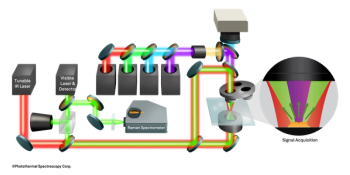
- Spectroscopy-02-11-2011
- Volume 26
- Issue 2
Total Reflectance X-Ray Fluorescence Spectroscopy
X-ray fluorescence spectroscopy (XRF) provides sensitive analysis of the atomic composition of samples. The technique is particularly well-suited for analyzing the elemental range from sodium to uranium, which covers the majority of the metallic elements.
X-ray fluorescence spectroscopy (XRF) provides sensitive analysis of the atomic composition of samples. The technique is particularly well-suited for analyzing the elemental range from sodium to uranium, which covers the majority of the metallic elements. Accommodations can be made to allow XRF to pick up the lighter elements. Some samples can be effectively examined nondestructively, while other samples may require grinding, fusion, or some other form of sample preparation.
2010 T-XRF Industrial Distribution
There are many types of XRF systems, including wavelength-dispersive (WD-XRF), energy dispersive (ED-XRF), thickness/microspot XRF, handheld XRF, and total reflectance XRF (T-XRF). In T-XRF specifically, the geometry of the system is what differentiates T-XRF from other XRF techniques. In T-XRF, the X-ray source is aligned so that the X-rays are incident on the surface of the sample at a very small angle, generally less than 1°. This grazing angle geometry allows the system to produce a relatively high signal-to-noise ratio. Furthermore, X-rays do not penetrate more than a few nanometers into the sample, making T-XRF an excellent technique for analyzing the composition of surfaces.
The T-XRF market accounts for only about 5% of the overall XRF market, but is expected to see annual growth in demand that is consistent with the broader market, at around 7%. Steady growth in the general and environmental testing sector combined with rebounding growth in the semiconductor and electronics industry, which account for nearly half of T-XRF demand, will be the primary drivers of the market.
The foregoing data were extracted and adapted from SDi's Global Assessment Report, 11th Edition. For more information, contact Arkady Hagopian, Senior Business Analyst, Strategic Directions International, Inc., 6242 Westchester Parkway, Suite 100, Los Angeles, CA 90045, (310) 641-4982, fax: (310) 641-8851, e-mail:
Articles in this issue
almost 15 years ago
Graphene: Why the Nobel Prize and Why Raman?almost 15 years ago
Productsalmost 15 years ago
Classical Least Squares, Part IV: Spectroscopic Theory Continuedalmost 15 years ago
The Nature and Utility of Mass Spectraalmost 15 years ago
Do You Get What You Pay For?almost 15 years ago
Vol 26 No 2 Spectroscopy February 2011 Regular Issue PDFNewsletter
Get essential updates on the latest spectroscopy technologies, regulatory standards, and best practices—subscribe today to Spectroscopy.



![Figure 3: Plots of lg[(F0-F)/F] vs. lg[Q] of ZNF191(243-368) by DNA.](https://cdn.sanity.io/images/0vv8moc6/spectroscopy/a1aa032a5c8b165ac1a84e997ece7c4311d5322d-620x432.png?w=350&fit=crop&auto=format)
